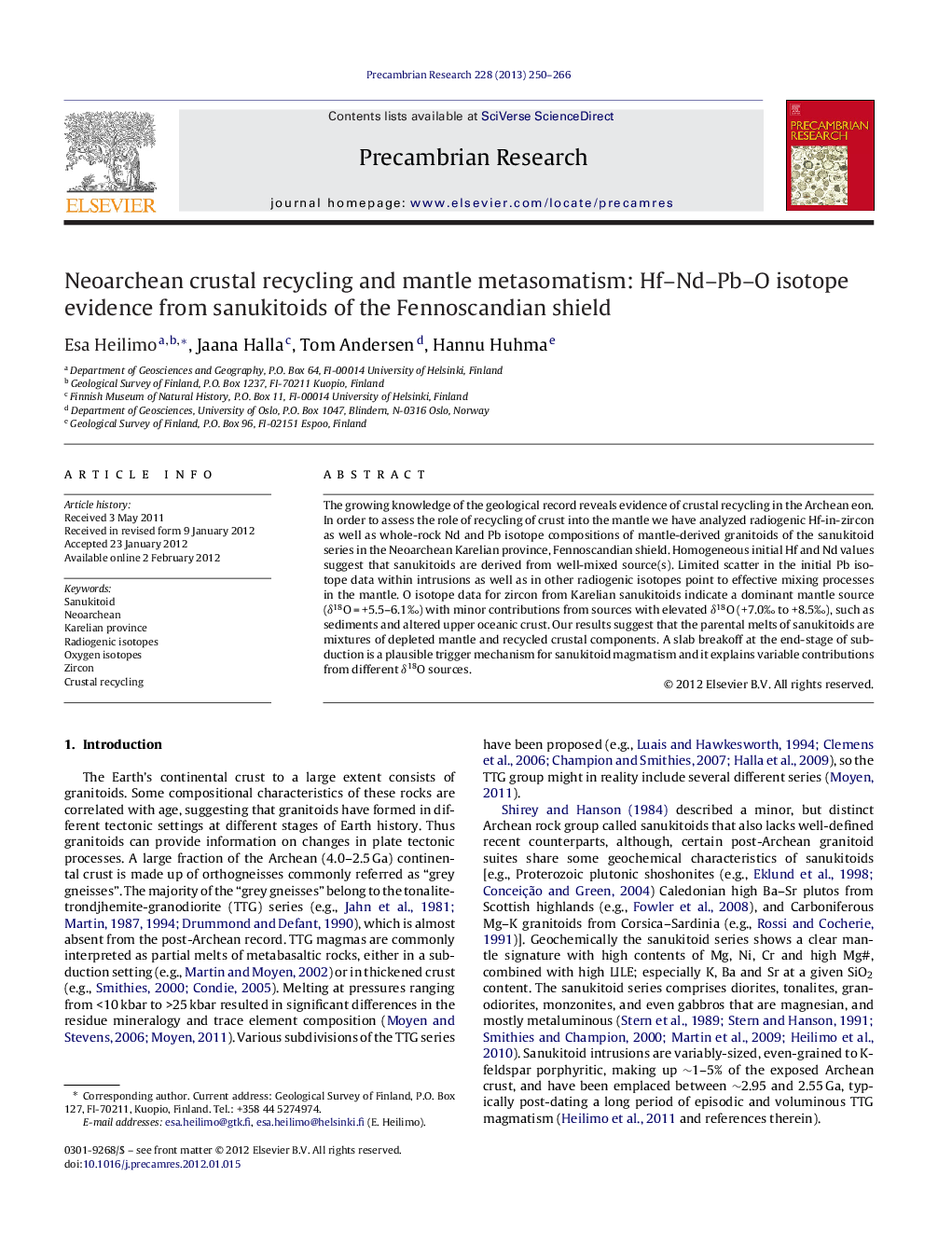| Article ID | Journal | Published Year | Pages | File Type |
|---|---|---|---|---|
| 4723433 | Precambrian Research | 2013 | 17 Pages |
The growing knowledge of the geological record reveals evidence of crustal recycling in the Archean eon. In order to assess the role of recycling of crust into the mantle we have analyzed radiogenic Hf-in-zircon as well as whole-rock Nd and Pb isotope compositions of mantle-derived granitoids of the sanukitoid series in the Neoarchean Karelian province, Fennoscandian shield. Homogeneous initial Hf and Nd values suggest that sanukitoids are derived from well-mixed source(s). Limited scatter in the initial Pb isotope data within intrusions as well as in other radiogenic isotopes point to effective mixing processes in the mantle. O isotope data for zircon from Karelian sanukitoids indicate a dominant mantle source (δ18O = +5.5–6.1‰) with minor contributions from sources with elevated δ18O (+7.0‰ to +8.5‰), such as sediments and altered upper oceanic crust. Our results suggest that the parental melts of sanukitoids are mixtures of depleted mantle and recycled crustal components. A slab breakoff at the end-stage of subduction is a plausible trigger mechanism for sanukitoid magmatism and it explains variable contributions from different δ18O sources.
► Radiogenic isotopes indicate well-mixed mantle source to the Karelian province sanukitoids. ► Limited scatter in Pb-isotopes suggest insignificant contamination during the emplacement. ► Oxygene isotopes from zircons indicate mainly mantle source with variable contributions from a high δ18O source such as sediments and/or altered upper oceanic crust.
